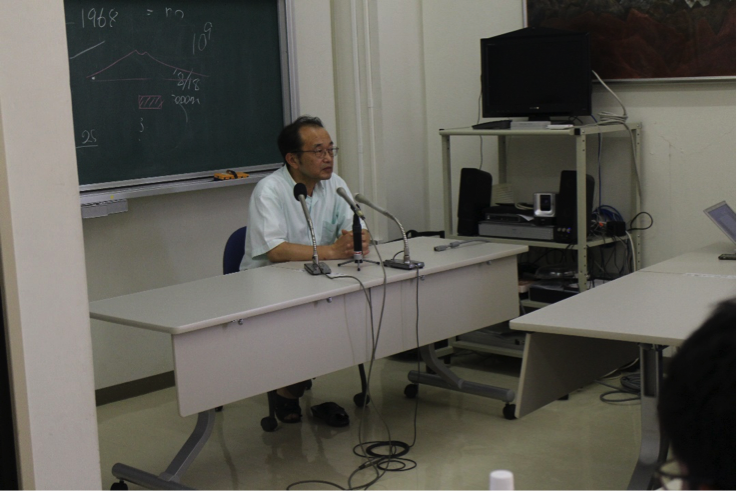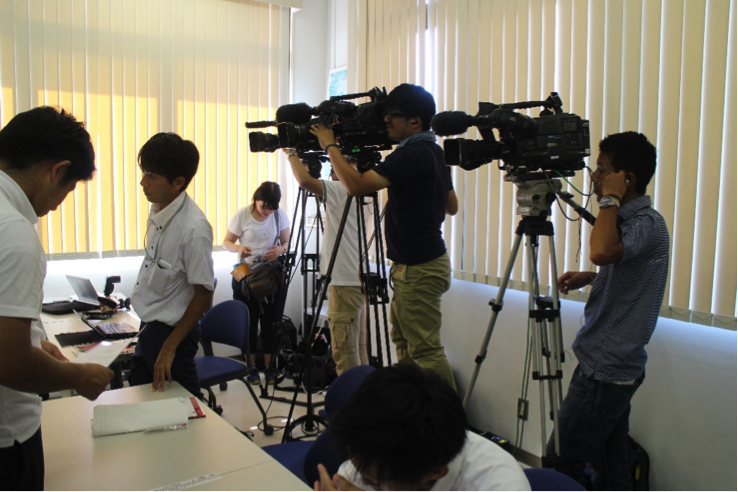Overview
The volcanic alert at Sakurajima volcano (Kyushu, Japan) was raised to Level 4 at 10:15 (JST) on August 15 by the Japanese Meteorological Agency (JMA). The alert system has 5 levels (5 is highest) for advising residents about dangers from erupting volcanoes. About 70 to 80 people living within a radius of 3 km of the summit area have been evacuated because of the possibility of a significant volcanic eruption. The entire population of the volcanic island is about 4500. The nearby city of Kagoshima, which is about 6 to 10 km west of the volcano summit, has a population of about 600,000 people.
The alert level was raised on August 15 because of the increase in the number of small volcanic earthquakes that are occurring in the vicinity of the volcano, along with measurements of accelerated rates of the inflation of the volcano. Sakurajima has been showing signs of continuous inflation since the beginning of this year.
Sakurajima is a volcanic island about 10 km across, located in northern Kagoshima Bay. The northern part of Kagoshima Bay is formed by Aira Caldera, which is a large volcanic structure with a diameter of about 20 km that was created about 29,000 years ago by very large volcanic eruptions.
Recent major eruptions occurred at Sakurajima volcano in 1914 (Taisho eruption) and 1946 (Showa eruption). Since 1955 there has been almost continuous low to moderate volcanic activity, including strong vulcanian explosions and occasional small pyroclastic flows.
The Disaster Prevention Research Institute of Kyoto University maintains an observatory on Sakurajima volcano for hazard monitoring and volcanological research of the eruptive activity.
Summary of press briefing by Prof. Masato Iguchi at Sakurajima Volcano Research Center on August 23 at 16:00 to 16:25.
Comparing the recent dike intrusion of 15 August with previous activity that started on 29 May 1968, the possible future progression of volcanic activity at Sakurajima volcano was discussed.
In the current volcanic unrest, the occurrence of A-type earthquakes quickly declined following their sudden increase, which is similar to the pattern of earthquake activity observed in May 1968. In 1968, the earthquakes temporary increased on 29 May then declined, and associated explosive activity was at a low level for over a year. However, in October 1972 explosive activity increased again and continued for an extended time. Presently volcanic activity is at a low level, however, based on this previous example, activity at Showa crater may increase in the future. It is important to consider the eruptive activity over a slightly longer time frame.
Also, from the results of a leveling survey, which was done quickly after 15 August, there is a change in the location of the dominant source of deformation from the deep inflationary source of magma under Aira caldera to the current shallow dike intrusion under Minami-dake. Although the present crustal deformation is dominated by the shallow dike intrusion, the magma supply from under Aira Caldera continues, so a large eruption similar to the Taisho eruption (1914) is possible in the near future.
 Photo. Professor Iguchi answering questions from the press.
Photo. Professor Iguchi answering questions from the press.
Photo. Press gathered at Sakurajima Volcano Research Center
Summary of press briefing by Prof. Masato Iguchi at Sakurajima Observatory on August 22 at 16:00 to 17:00.
This information is based on the discussions at the meeting of the Coordinating Committee for Prediction of Volcanic Eruptions on August 21.
Activity from August 15 at Sakurajima volcano is thought to be caused by a dike intrusion at depths of a few kilometers directly under Minami-dake (South Summit). This dike intrusion is different from magma movements associated with recent eruptive activity at Minami-dake and Showa crater. The current intrusion will likely not lead directly to a large eruption.
The current activity is indicative of magma rising from depth under the volcano. Such rising magma causes the east-west tensional features seen in the geological structure of the volcano. The recent activity may be one step in a process leading up to a large eruption, such as the 1914 Taisho eruption.


